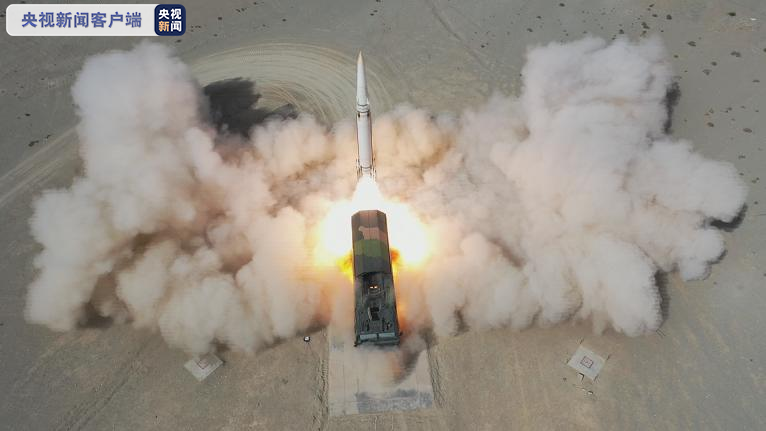The First Brigade of Conventional Missiles of the Chinese Rocket Force recently “overcame harsh natural conditions and complex electromagnetic interference to respond quickly in the Northwest Desert, successfully launching two new missiles that accurately hit the targets of the Blue Army’s multi-protected positions several hundred kilometers away, effectively paralyzing key information nodes of the Blue Army’s defense system”, according to China’s CCTV.
“The launch successfully expanded the rocket force’s new material warhead variety, improved the conventional missile’s multi-mode precision hitting, destruction and paralysis of nodes, fusion anti-disturbance, and advance enemy-breaking capabilities, and powerfully improved the rocket force’s system attack and defense level.”

At the same time, the Chinese Rocket Force’s Weibo account also reported the launch with “Rocket Force successfully launched two new missiles”.
From the images in the report, this type of missile belongs to the DF-15 ballistic missile family. According to public information, the Dongfeng-15 ballistic missile (DF-15, NATO code name: CSS-6, export version called M-9) is a ground-to-ground medium- to close-range tactical ballistic missile developed by China in the 1980s.
The DF-15B ballistic missile is an improved version of the original version of DF-15 missile, which made its debut in 1999 on the 50th anniversary of the National Day of China, and has a slender biconical shape with four small stabilizing wings at the end of the warhead that can adjust the trajectory of the warhead’s terminal flight, this structure is very similar to the Pershing II missile of the United States. The warhead speed of the DF-15B at the end of the attack can reach Mach 6, making it difficult to intercept.
As for DF-15C, it has been officially mentioned publicly in 2017 at the latest and is “the world’s unique ground-drilling ballistic missile” given its focus on ground drilling, and from the published photos of the DF-15C missile, it does not have the four stabilizer wings as the missiles launched this time do. So the code name of the new missiles launched this time should be DF-15D, which hasn’t been officially announced yet.
And judging from the “several hundred kilometers” distance of the missile launches this time, the simulated target of this attack should be Taiwan, the main target of mainland China at the moment.
From the text of the report, it appears that the DF-15D has enhanced capabilities to penetrate defenses in electromagnetic interference environments compared to the DF-15B.
It is worth noting that the Chinese rocket force just conducted a DF-15 exercise in a forest in southeastern China in June, but no actual launch seems to have taken place at that time.
